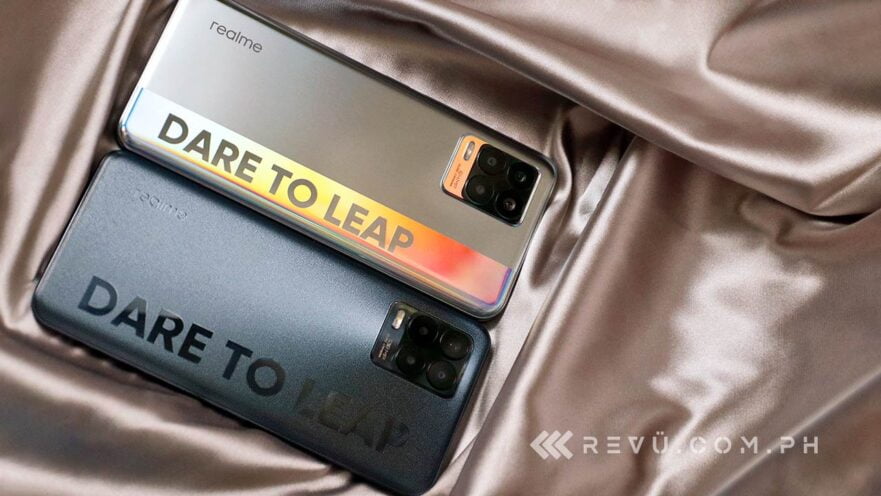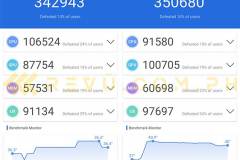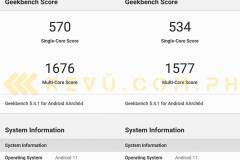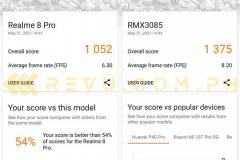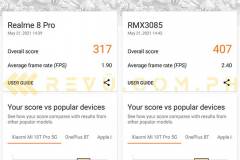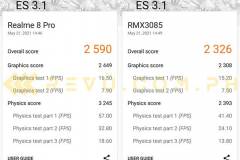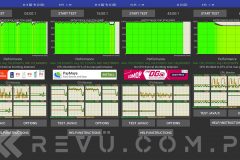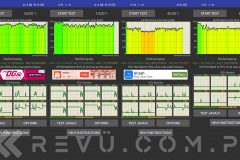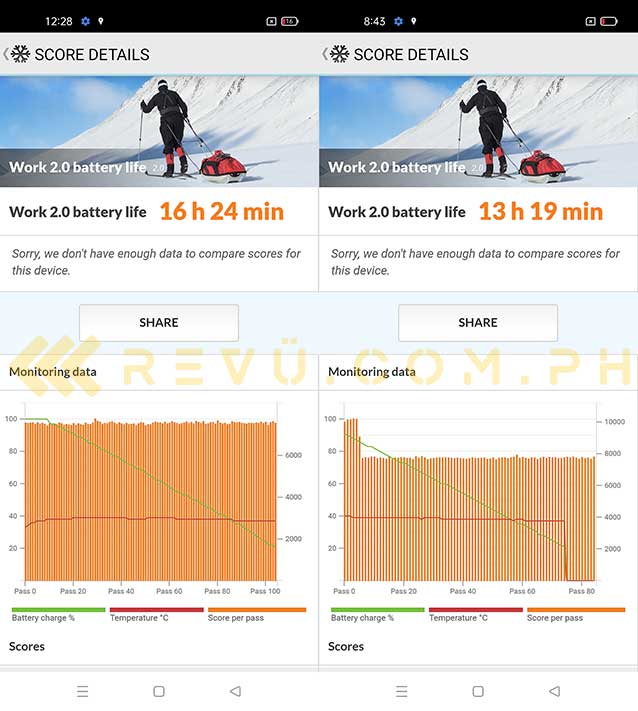Estimated reading time: 9 minutes
Realme‘s latest entries to its number series are now available in the Philippines. The Realme 8 and Realme 8 Pro introduce some new — and impressive — specs to the line, including AMOLED screens on both models and a 108-megapixel Samsung sensor around the back of the top-end Pro variant. They look a lot different compared to previous generations, too.
But as with any sequel, not everything is better this time around. So to help you make an informed decision on which new Realme smartphone to consider, we decided to review the lineup in one go, and give our honest recommendation at the end of this review. Should you buy the Realme 8 or Realme 8 Pro? Read on for our verdict.
Price and availability
Locally, the Realme 8 has a suggested retail price of P13,990 (roughly $293), P3,000 ($63) less than the Realme 8 Pro, which officially goes for P16,990 ($355). They come with 8GB LPDDR4X RAM and 128GB of UFS 2.1 storage. The vanilla version is available in Cyber Silver and Cyber Black colors, whereas the Realme 8 Pro comes in Infinite Black and Infinite Blue. Both smartphones are now available online and in stores nationwide.
Hardware
The design of the Realme 8 series is a dazzling departure from earlier models. It’s a “love it or hate it” affair, as mentioned in our preview video, but personally, after spending time with both devices, we found the Realme 8 and Realme 8 Pro to have the most attractive designs the company has come up with in recent memory.
Realme’s latest number lineup looks much different and much louder this time around, opting for a square camera module at the back instead of a vertical array that has been the calling card of previous generations. Both models feature Realme’s “Dare to Leap” mantra in bold, all-caps print, which is immediately distinguishable even with a frosted case on. And they’re made of plastic except on the front.
We think the Realme 8 and Realme 8 Pro have the most attractive designs the company has come up with in recent memory
The badge is bigger on the Pro version than on the regular Realme 8, but there’s no going around the fact that it’s the first thing people will notice unless you buy a colored case to hide it.
If we were to choose between the two, we’d pick the standard model in a heartbeat; the Cyber Silver color variant of the Realme 8, with its flashy, gradient-rich coloring on glossy plastic, just looks too good to pass up. Construction-wise, they’re built similarly, anyway.
The Realme 8 Pro in Punk Black sports a matte-black coating with a slightly rough texture to it for improved grip and handling. If you prefer a more subtle, understated look, the Pro should be your pick.
Realme 8 and Realme 8 Pro preview video we shared before the two smartphones were launched in the Philippines
When it comes to ports and buttons, the two phones are virtually identical. They’re both decent for one-handed use — not too wide or too tall — and weigh about the same. For some reason, though, the Realme 8 Pro is ever so slightly thicker than the Realme 8, even if the latter packs a bigger battery.
Both screens are Super AMOLED, with 2,400 x 1,080 pixels, always-on capabilities, and under-display fingerprint recognition. Yet neither support HDR content, and they run at 60Hz in an era when many midrange displays are operating at 90Hz or faster. To make up for that, Realme has boosted the touch sampling to 180Hz for a more responsive experience, particularly when playing games.
Still, 60Hz is a noticeable downgrade coming from 90Hz, but even more so from 120Hz, regardless of how quickly the touchscreen responds. It’s sad when you consider that last year’s Realme 7 and Realme 6 sport 90Hz panels, albeit of LCD quality.
SEE ALSO: Realme takes top spot in PH smartphone rankings in Q1 2021
Examining the displays further, we found them to be decent, boasting mostly accurate colors, dark blacks, and stable viewing angles. Using a screen-testing app, we noticed the Pro had some minor issues displaying colors in the cyan and yellow parts of the spectrum. The standard version, meanwhile, showed some green tint when it was at low brightness.
The Realme 8 series has Widevine L1 certification, meaning users can watch HD content on Netflix and other video-streaming platforms. AMOLED screens are typically better than LCDs for viewing movies and TV series, and that’s generally true with these handsets, too. As long as you’re not nitpicky about color fidelity, both the Realme 8 and Realme 8 Pro should deliver a pleasant viewing experience.
Cameras
When it comes to camera specs, not much has changed for the Realme 8 series, with one exception. The vanilla model still pairs a 64-megapixel primary sensor with f/1.8 lens, whereas the dedicated ultra-wide, macro, and depth cameras on both devices come with the same specs as last year — 8 megapixels for landscapes, 2 megapixels for closeups, and 2 megapixels for portraits.
On the front, the 16-megapixel in-screen camera of the Realme 8 remains. The Realme 8 Pro includes the same spec; however, it’s a downgrade from the 32-megapixel selfie shooter on the Realme 7 Pro. Night mode is available on the main and wide-angle cameras at the back, as well as on the front-facer to help you take flattering selfies indoors and at night.
Shot on the Realme 8: 1) 1x; 2) 3x zoom; 3) 5x zoom; 4-5) Portrait effects; 6-8) with filters; and 9-14) selfies. Again, the camera system is still the same as the phone’s predecessor. Click on this for our camera test of the Realme 7
The biggest improvement here, of course, can be found at the back of the Pro model: a flagship-grade, 108-megapixel Samsung Isocell HM2 image sensor. It is the sharpest on a Realme smartphone yet and easily one of the best you can get on a midranger right now. The image quality speaks for itself. Besides the top-notch image quality, you also get 3x lossless zoom.
Captured on the Realme 8 Pro: 1) Night mode; 2) Auto mode; 3) 3x zoom; 4) 5x zoom; 5) Night mode; 6) Auto mode; 7) 1x; 8) 3x zoom; 9) 5x zoom; 10-11) Portrait effects; 12-13) with filters; 14) 1x; 15) 3x zoom; 16) 5x zoom; 17) 20x zoom; 18) Macro mode; 19) 2x zoom; 20) 108MP mode; 21) Ultra-wide; and 22-26) selfies. Easily one of the best you can get on a midranger now!
Like the HM1 sensor, the HM2 uses nine-pixel binning to merge nine neighboring pixels together and produce higher-quality 12-megapixel photos with less noise. The Realme 8 Pro can likewise capture stills at up to 12,000 x 9,000 pixel resolution and record 4K video at 30 fps.
Notably, the phone introduces the industry’s first Starry mode for astrophotography time-lapse videos. The results look great, but you’ll need a tripod to keep the phone rock-steady for a couple of hours. You also get a bunch of new portrait effects on the new lineup’s camera app, including Dynamic Bokeh, Neon Portrait, and AI Color Portrait, which mutes the background while highlighting a specific color in photos and videos.
In poor lighting conditions, the Pro variant is very much capable of balanced pictures, offering great colors and contrast even without enabling Night mode. Of course, photos taken using the said mode turn out brighter, but they’re also softer and sometimes lacking in fine detail. For most scenarios, it probably won’t matter if you switch to Night mode, and the output may even be better.
Performance
The Realme 8 and Realme 8 Pro bear the same MediaTek Helio G95 and Qualcomm Snapdragon 720G processors as the Realme 7 and Realme 7 Pro (and Realme 6 Pro), but at least one of them is still good for the price.
The vanilla version may be better off without the Helio G95, though, especially considering how many capable midrange SoCs are available on the market. Any chip from MediaTek’s Dimensity lineup would serve as an excellent alternative. And yes, we’re aware that the Dimensity 700-powered Realme 8 5G exists, only it’s not available here at the moment.
A year after its launch, our biggest gripe about the Helio G95 remains; it’s simply not as efficient as it should be, and this has a significant adverse effect on its gaming performance and mileage per charge. For day-to-day use, it’s largely fine — smooth and responsive when it comes to scrolling and swiping between homescreens, and opening and switching apps feels quick enough.
Benchmarks (Realme 8 Pro first, Realme 8 next): 1) Antutu; 2) Geekbench; 3) Wild Life; 4) Wild Life Extreme; 5) Sling Shot Extreme; and 6-7) CPU Throttling Tests
Once you get to gaming and running benchmarks, though, the Helio G95 tends to throttle over time. Our CPU Throttling Test results revealed the standard version dropping to 68% and 67% of its max performance over 45- and 60-minute runs, respectively. Under the same conditions, there was no throttling detected on our Realme 8 Pro after 45 minutes of stress-testing, while its performance dropped to 87% at the end of a 60-minute test.
Those are incredible numbers for the Snapdragon 720G-based Pro variant. On the flip side, the Realme 8 numbers aren’t, and the results transfer over during prolonged gameplay, with frame rates dipping here and there and the phone’s rear panel getting a tad toasty as a consequence of the uneven thermal performance of the chipset. In both day-to-day tasks and gaming, the Realme 8 Pro delivers a similar experience to the Realme 8, but without the heating issues.
As far as battery life is concerned, both devices offer a full day and some change of mixed use. The upgraded model should provide a bit more mileage if your typical usage involves gaming for long periods. The Realme 8 and Realme 8 Pro pack 5,000mAh and 4,500mAh batteries with 30- and 50-watt rapid wired charging in tow, respectively.
Based on our tests, it takes about 75 minutes to juice up the Realme 8 from zero to full, while the Realme 8 Pro is fully charged and ready to go in 55 minutes. Impressive, though it’s still slower than what last year’s Realme 7 Pro offered with its 65-watt SuperDart Charge.
Our final thoughts
If we were to pick one, our money would go to the Realme 8 Pro without question. It boasts a flagship camera spec plus a similarly capable yet much more efficient processor. The battery life is also better if you play heavy games at mid to high settings. Versus the Realme 8 Pro, the only real win we can credit to the Realme 8 is its flashier styling (then again, design can be subjective). So if the P3,000 ($63) price difference is not an issue, just go Pro.
Realme 8 specs
- 6.43-inch Super AMOLED display, 2,400 x 1,080 resolution, 60Hz refresh rate
- 12nm octa-core MediaTek Helio G95 processor
- Mali-G76 GPU
- 8GB RAM
- 128GB storage
- Quad 64-megapixel (main), 8-megapixel (ultra-wide), 2-megapixel (macro), 2-megapixel (mono) rear cameras
- 16-megapixel front camera
- Fingerprint reader (in-display)
- 5.000mAh battery with 30-watt USB-C charging
- Realme UI
- Color options: Cyber Black, Cyber Silver
Realme 8 Pro specs
- 6.43-inch Super AMOLED display, 2,400 x 1,080 resolution, 60Hz refresh rate
- 8nm octa-core Qualcomm Snapdragon 720G processor
- Adreno 618 GPU
- 8GB RAM
- 128GB storage
- Quad 108-megapixel (main), 8-megapixel (ultra-wide), 2-megapixel (macro), 2-megapixel (mono) rear cameras
- 16-megapixel front camera
- Fingerprint reader (in-display)
- 4,500mAh battery with 50-watt USB-C charging
- Realme UI
- Color options: Infinite Black, Infinite Blue
Share this Post


